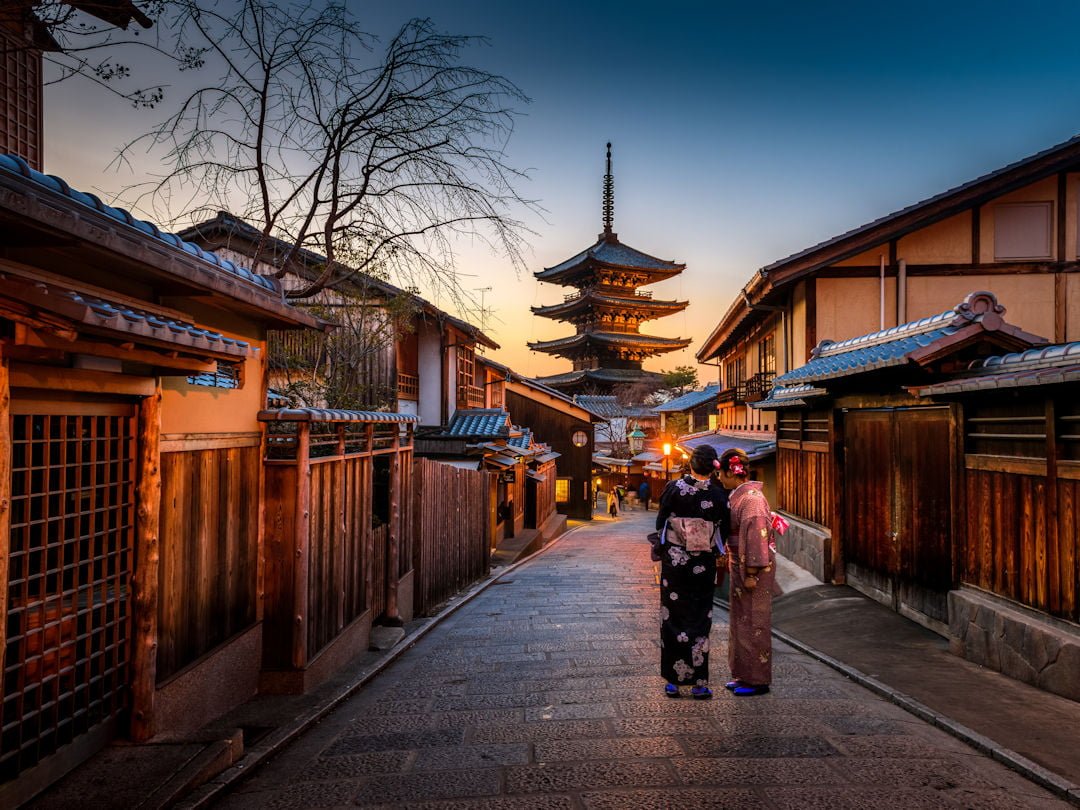This article may contain links to products and services we use and recommend. We may receive compensation when you click on links to those products. For more information, see our Disclosure Policy.
Japan is a country where the ancient and modern seemingly coexist in perfect harmony. But there’s much more to the Land of the Rising Sun than meets the eye. With a rich history and complex social norms, Japan may surprise even the most seasoned travellers. In this article, we’ll take a closer look at some of the weird and wonderful, surprising things we learned when travelling around the country.
Homes in Japan are (often) not well insulated
For a country with climate zones stretching from the subarctic in the far north to the subtropics in the far south, homes in Japan are surprisingly lacking in insulation. But then again, Japan also frequently faces natural disasters (from earthquakes and tsunamis to typhoons), and as a result, residential dwellings tend to be built using cheaper materials (including wood and single-pane glass).
The exception are homes in the far north of Japan, such as Hokkaido, which usually have double glazing (or even triple-glazing in modern builds) and proper insulation.

Homes in Japan are (often) badly insulated | Photo by Mylene Larnaud on Unsplash
Heating a badly insulated place would cost a fortune. So, rather than heating the whole house, only the areas used are heated. That space may be a room but could as well just be the dinner table – with a kotatsu (a table with an in-built heater) very common in many homes.
While heat pumps are becoming more common to heat entire rooms, the go-to heating source in many traditional Japanese houses we stayed in is still a kerosene heater – neither the safest nor the healthiest option.

Heating sources in Japanese homes include the Kotatsu, Kerosene space heater and Heat pump
You’ll constantly take your shoes off
Speaking of Japanese homes…
When you enter a Japanese home (and even some attractions and restaurants), you must take your shoes off. Place them into the shelf or locker provided (or in a neat line along the edge of the entranceway, with the tip of the shoe facing the outside). By the way, the entranceway of a Japanese house (called genkan) is easily recognisable: its floor is lower, and the flooring material is harder than in the rest of the house.
In many cases, you will be provided slippers to wear around the house. Do wear them, but take them off when you enter a room with a tatami floor (and just walk around in your socks) or when you enter the toilet room (separate slippers are provided there).
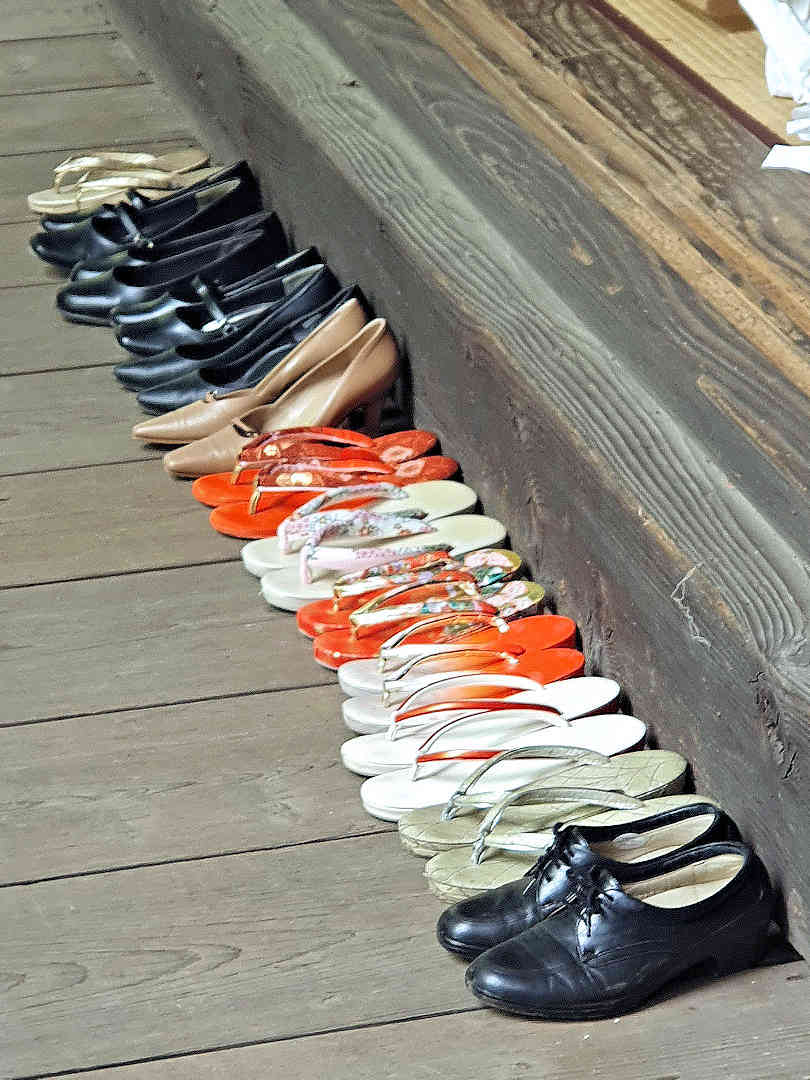
You'll need to take your shoes off when you enter a home (and some attractions) in Japan
Visitor accommodation might be different to what you’re used to
We loved staying in traditional Japanese guesthouses (called minshuku). But when staying longer in one place, short-term rentals just made more sense for us. After all, preparing your own meal “at home” does cost a whole heap less than paying someone else to make it for you (three times a day).
One thing we learned though: Japanese kitchens (even in apartments rented out to foreign visitors) don’t look like western kitchens. Chopsticks are omnipresent (of course), but table knives (to put jam or peanut butter on your toast) are not (and neither is a toaster). There is also (usually) only ONE kitchen knife – the super-versatile Santoku knife.
In apartments, benchtop space is (pretty much) non-existent, and the cooking usually happens on a one-burner gas stove.
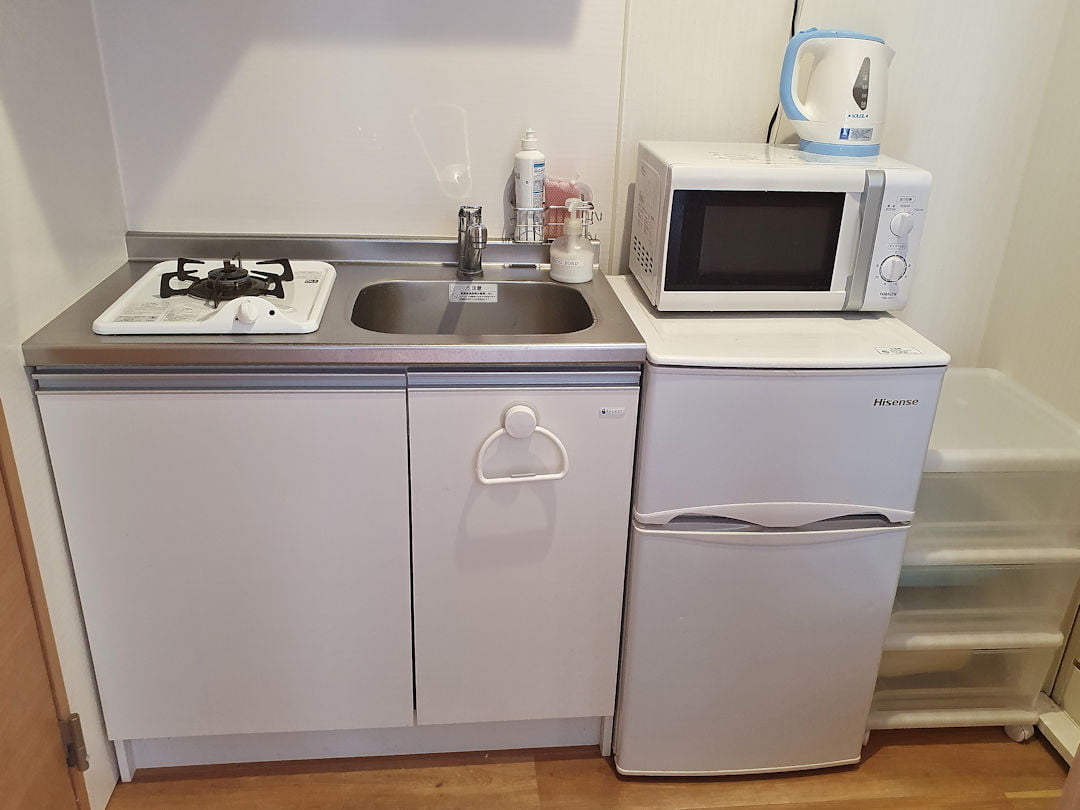
A Japanese apartment kitchen is not big but allows you to prepare your own meals (and save on dining out)
On the plus: Japanese hosts somehow manage to squeeze a washing machine (and a small drying rack) into the tiniest of places. So, if you need to wash your clothes during your trip – no problem (detergent is usually provided too).
Other things to be aware of:
You will sleep harder than you might be used to at home. Futons are much thinner than western mattresses (5-10cm) – which means you only have a bit of cushioning between you and the (tatami) floor. Even mattresses in western-style beds tend to be (much) harder than what you may sleep on at home.

You'll sleep harder in Japan than you're used to at home, not only on futons
And speaking of beds, western-style couple beds are tiny in Japan. With space at a premium, beds intended for up to two occupants are (usually) only 1.2-1.3m wide. So, if good sleep is important to you, book a western-style room with twin beds (or a traditional Japanese room where each of you will get a spacious single futon).
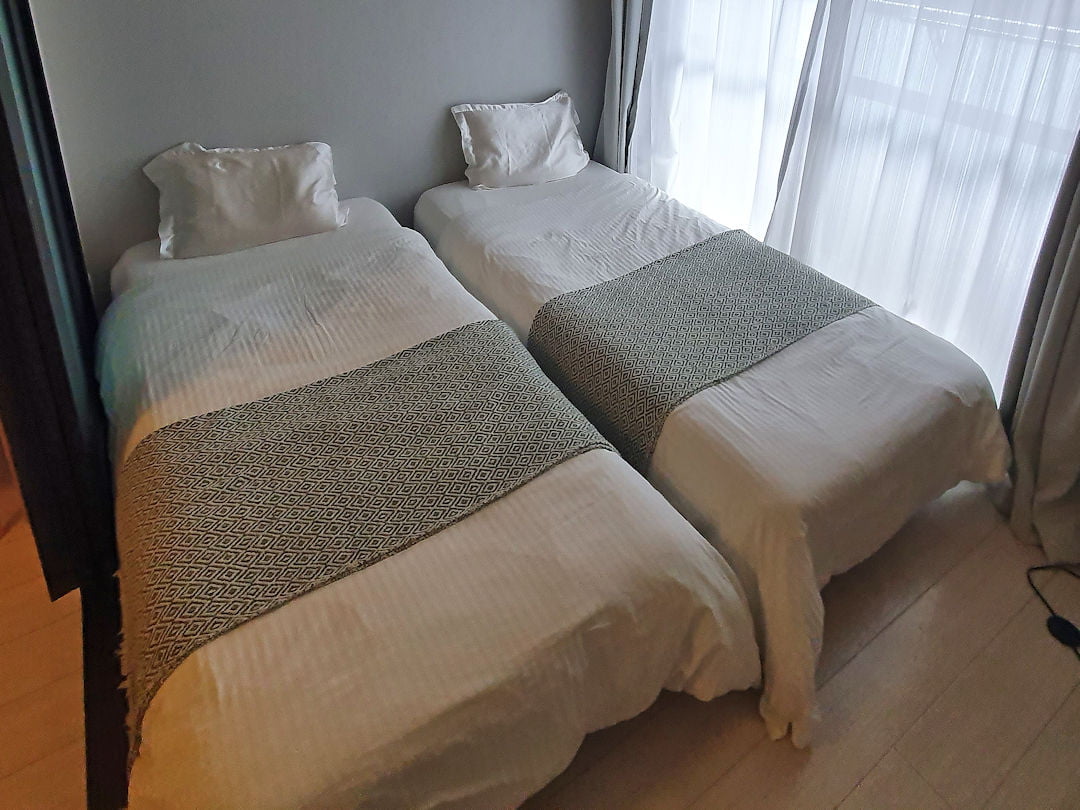
Book rooms with western-style twin beds or Japanese style rooms (with single futons on tatami floors) for a good night's sleep
Bathrooms (which are commonly separate from the toilet room) are usually plastic-encapsulated wet rooms. The bathtub might be filled with hot water (so that the whole family can enjoy an onsen at home). In this case, Japanese would shower outside the bathtub before jumping into their home onsen (hence the wet room).
And just in case you wonder: in every single place we stayed (whether minshuku, hotel or apartment), shower gel, shampoo and conditioner were provided by the hosts.
You will want to take a Japanese toilet home with you
Who hasn’t heard of the famous Japanese washlet toilets – with heated seats, an inbuilt bidet, a bum dryer and even the sound of rushing water to help you pee (or block out #2 noises)? While a bit OTT at first, you can get used to the comfort very quickly (who doesn’t want to have a warm butt when they need to go to the bathroom in the middle of the night?).
Also worth noting: Toilet paper in Japan is water-soluble and thus is always only single-ply.
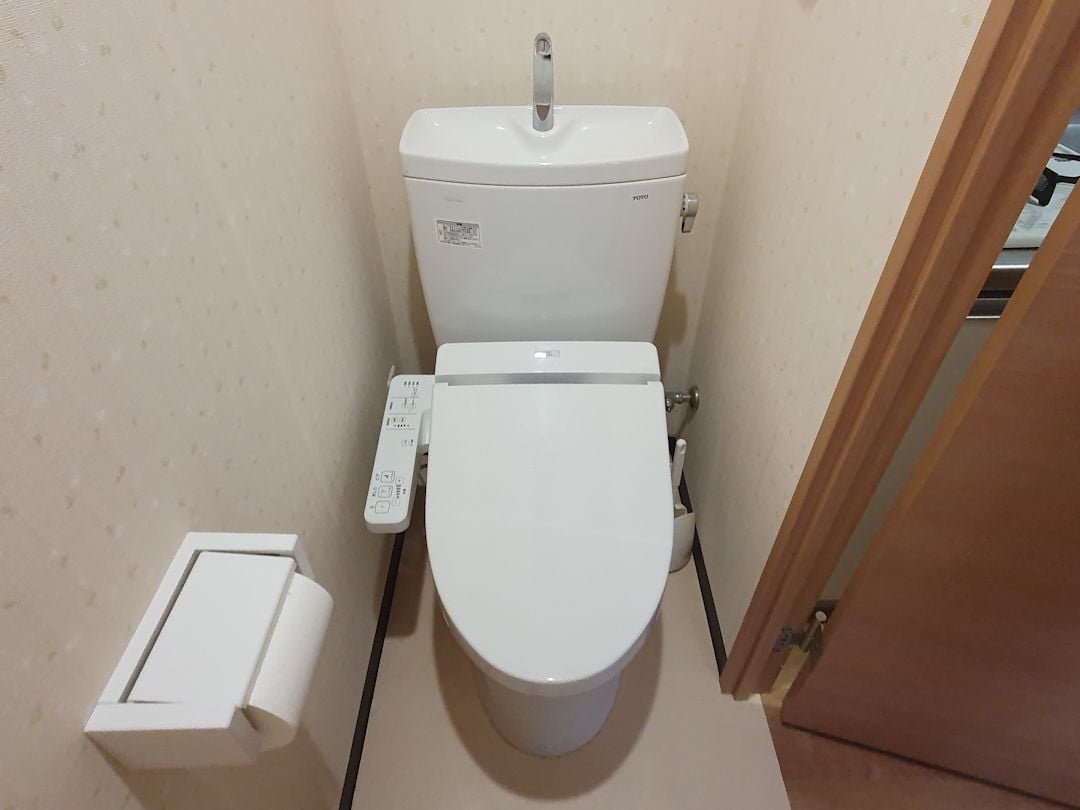
Japanese washlet toilets have a heated seat, an inbuilt bidet and a bum dryer
You might miss the number 4
We had noticed a few times that apartment buildings were missing an apartment #4 (or an entire 4th floor)… until we learned that the number 4 is considered bad luck – apparently because the number 4 (四 ) and the word death (死) sound the same (shi).

Apartments No4 (or 4th floors) are often missing in Japan as the number 4 is considered bad luck
Everything is a work of art, even manhole covers
Japanese put great emphasis on immaculate presentation – from flower arrangements and zen gardens to tea ceremonies, geisha performances and culinary experiences. Everything is a work of art. Even ordinary public sewer covers on the street become a canvas in Japan and (often colourful) expression of what the city (or prefecture) is about.
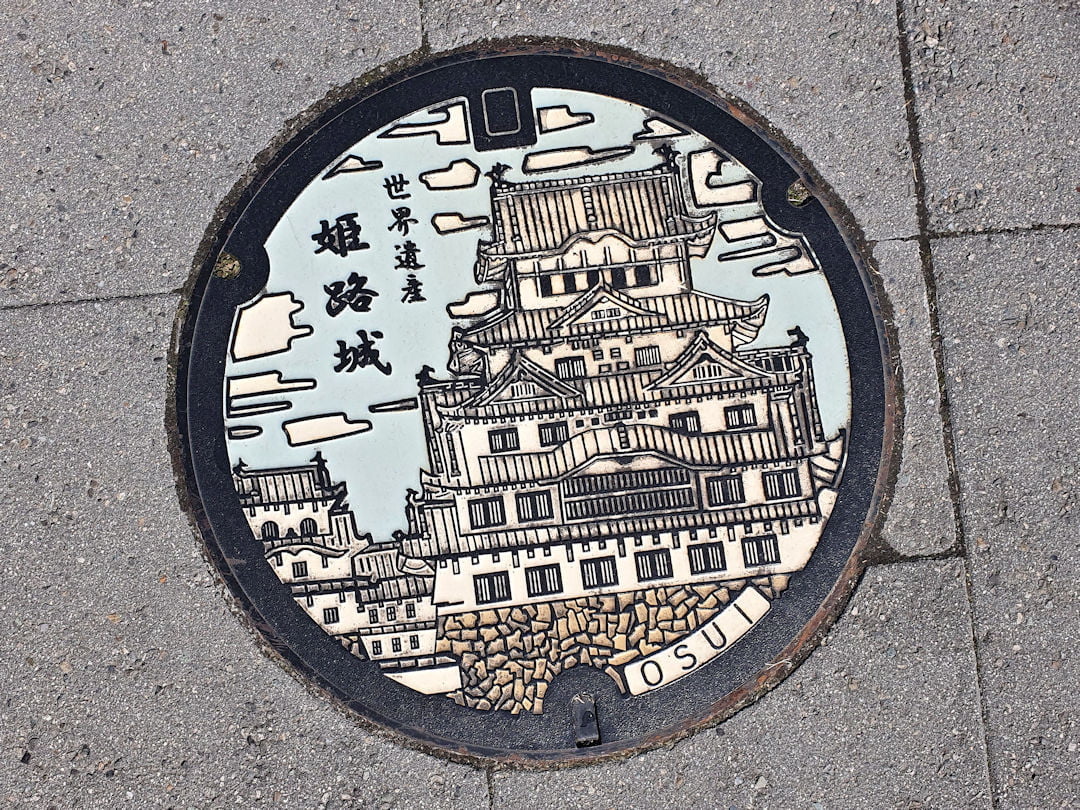
In Japan, even ordinary public sewer covers (like this in Himeji) become a work of art
Smoking is (still) prevalent
While in many public places, smoking is banned or relegated to dedicated smoking rooms (for example, in train stations), smoking cigarettes is still very prevalent in Japan:
- When booking accommodation (especially in business hotels), you will have the choice of non-smoking or smoking rooms. So, if you’re a non-smoker make sure you choose the right one.
- The same applies when dining out: In many restaurants, smoking is still allowed (especially in pub-style restaurants called Izakaya). Others have separate smoking rooms for patrons (or smoking is not allowed). If smoke bothers you when dining out, look for the (non-)smoking sign at the door or (if there is none) do the smell test and look for ashtrays on the tables or ask (Koko wa ki’endes ka?).

Smoking is (still) allowed in many restaurants in Japan | Photo by Josh Wilburne on Unsplash
You’ll produce a lot of rubbish (but won’t find many rubbish bins)
Another astonishing aspect is the prevalence of (single-use) plastic packaging. Almost everything in Japan is wrapped in plastic, often multiple times (including fruit and vegetables), which can be jarring for people like us who try to eliminate plastic as much as possible. We’ll talk about plastic waste in Japan (and what to do about it) in a separate article.
Despite all the packaging, rubbish bins are rare in public places (one reason we heard was the 1995 sarin attack in the Tokyo subway). Be prepared to carry your rubbish with you until you find a bin or discard it at your accommodation.
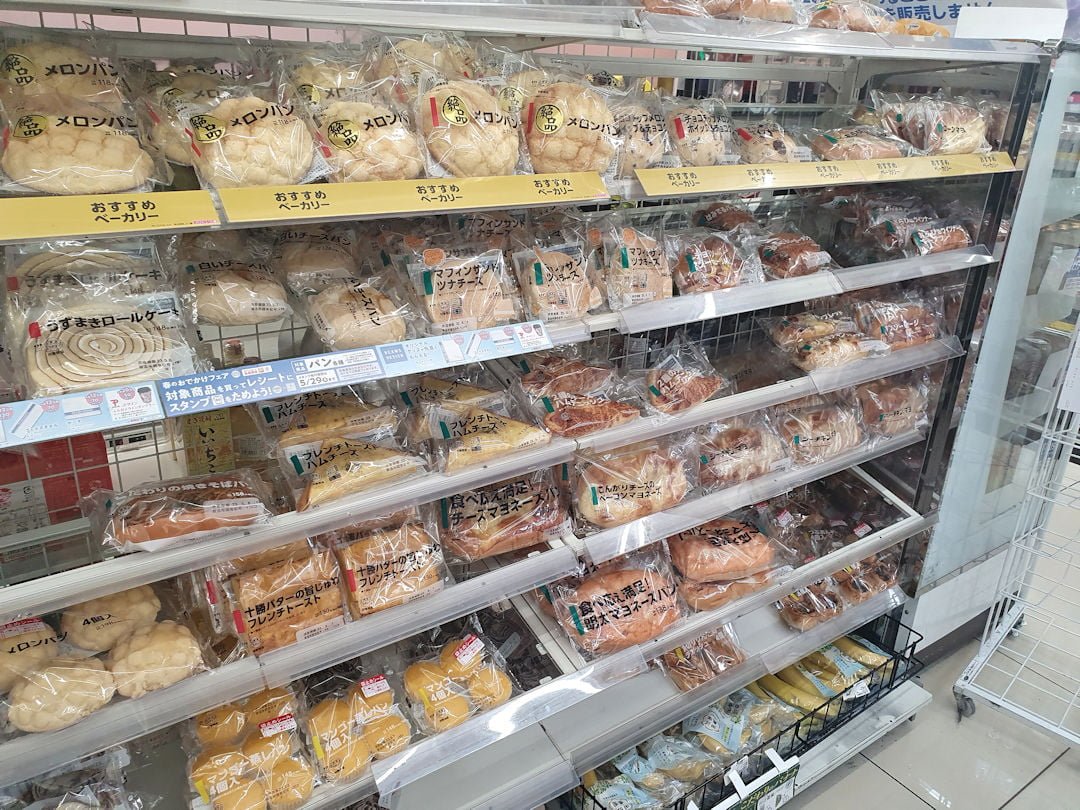
Almost everything in Japan is wrapped in plastic, often multiple times, causing a lot of plastic waste
English is not common (and it’s not a problem)
Don’t expect everyone to speak English – you will be disappointed. Even people who host foreign visitors regularly, like the hosts in traditional Japanese guesthouses, often do not speak English (or very little). But communicating despite the language barrier is part of the fun of coming to a country like Japan.
Google Translate is your best friend. You can download the language file to your phone to have offline access, but there are limitations. So ideally, you’ll always want to be online – it’s THE ONE APP you’ll use all the time/everywhere (even to figure out the buttons on the toilet).
Though do use the app with a grain of salt. AI/ML-based translation has come a long way, but it’s not 100%. Lost in Translation is not just a very cool movie (set in Japan for good reason).
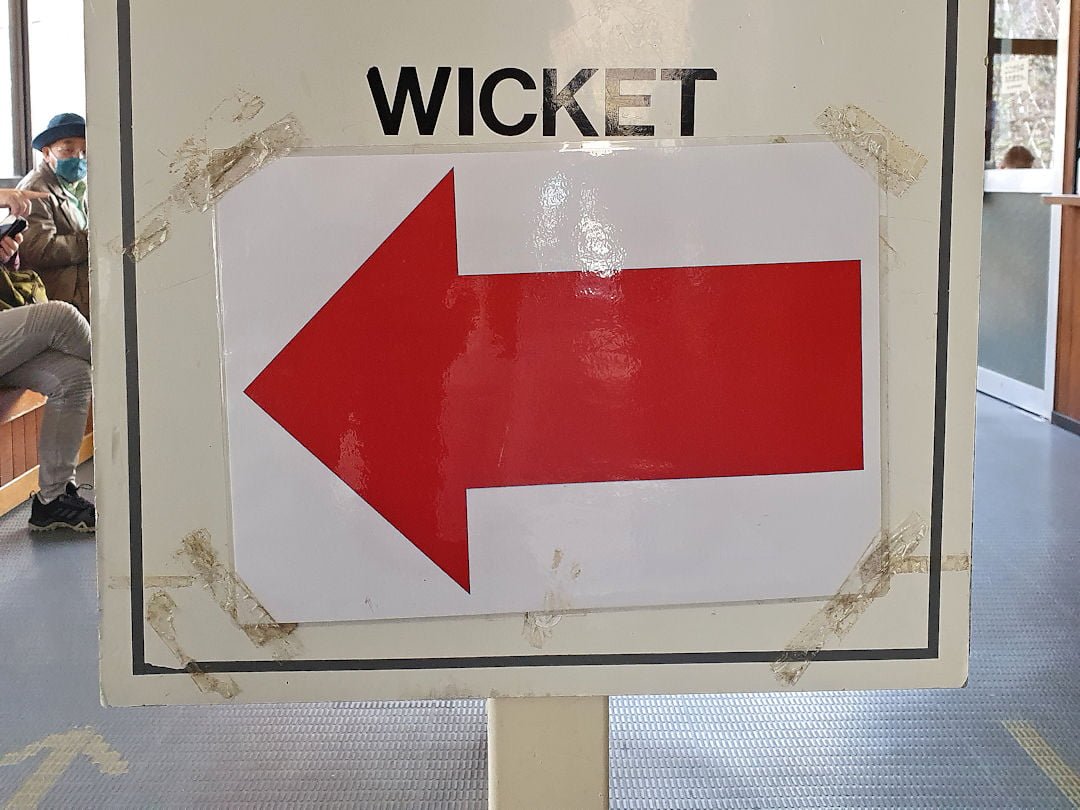
Lost in translation or maybe just a clever way of shortening "With Ticket"?
Another recommendation: Learn a few words of Japanese (and practice them on your travels). Japanese people are incredibly kind and patient – the least we can do is to try and say a few words like Hello (Kon’nichiwa), Goodbye (Sayōnara), Excuse me (Sumi’masen), I’m sorry (Gomen’nasai), Please (Onegai’shimas), Thank you (Arigatō’gozaimas), Yes (Hai), No (Īe) and It’s delicious (Oishī’des).
The first time I came to Japan was in the year 2000. Smartphones weren’t around back then, and navigating a city like Tokyo was much harder. These days, there is English signage everywhere – in train and bus stations, on trains and buses. Even the street signs in big cities are often bilingual, making it so much easier to navigate the country.
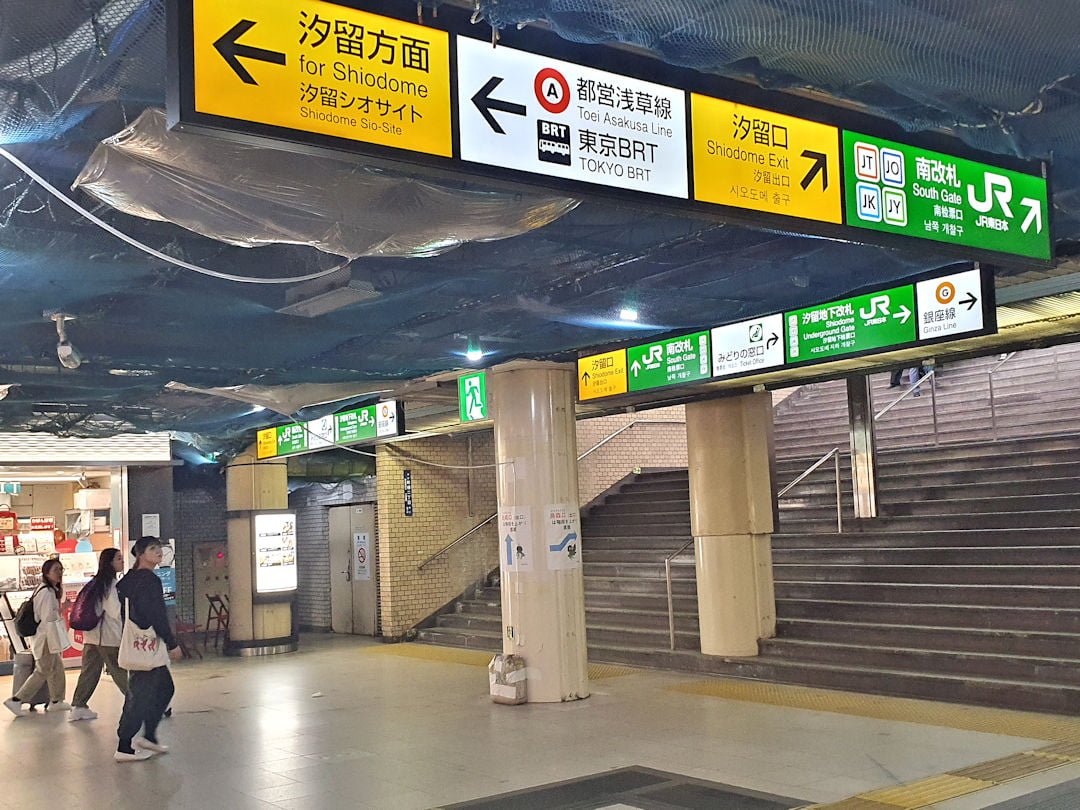
Bilingual signage makes it easy to navigate Japan
That said, some museums and places of cultural or historic significance (including temples and shrines) have surprisingly little English explanation. If a particular place interests you, do your research beforehand to avoid disappointment (entry fees are not the cheapest). Google Translate can help in those places, but it is hard work (and battery-draining) trying to translate the description of exhibits.

Multilingual brochures (like these at Himeji Castle) are rather rare in Japan
It’s all about convenience
Another thing we noticed is the lack of normal supermarkets. While there are some larger stores (like Aeon), they are not as prevalent as they are in other countries.
Instead, Japan has a vast network of 24-hour convenience stores called konbini (such as 7-Eleven, Lawson, Family Mart, and Seico Mart). These stores are on almost every corner and offer a surprisingly wide range of products – from snacks, drinks and (surprisingly tasty) ready-made meals to toiletries as well as basic clothing, household and tech items (like socks, kitchen tools and charging cables).
You can even print documents, withdraw money or send packages from convenience stores.
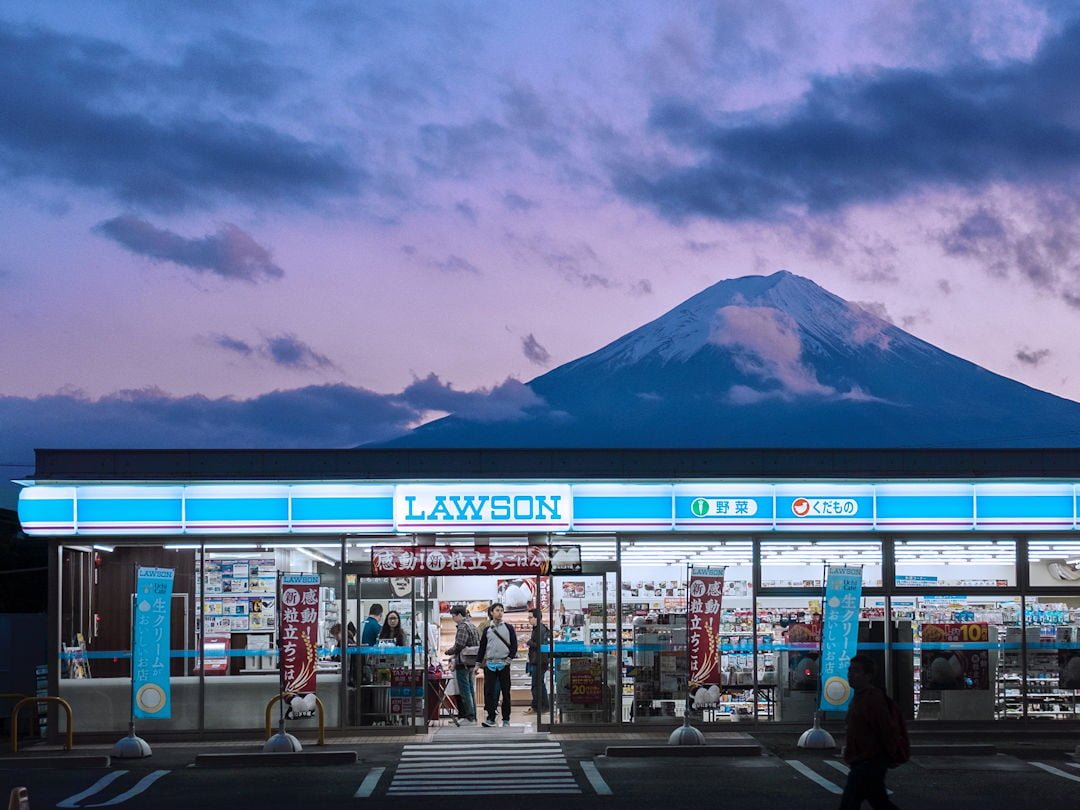
Japan has a vast network of 24-hour convenience stores | Photo by Matt Liu on Unsplash
Groceries, whether in convenience stores or supermarkets, are sold in portion sizes, which means you (have to) go shopping more often and end up spending more money than you intended.
Staying on the topic of convenience…
Vending machines are omnipresent – we counted up to five on a single street corner. Apparently, there are over four million of them overall – 1 for every 31 people. Most machines we saw sold drinks (including alcohol and hot drinks) and food (including ice cream). Again for convenience, many drink vending machines have recycling bins placed right next to them.
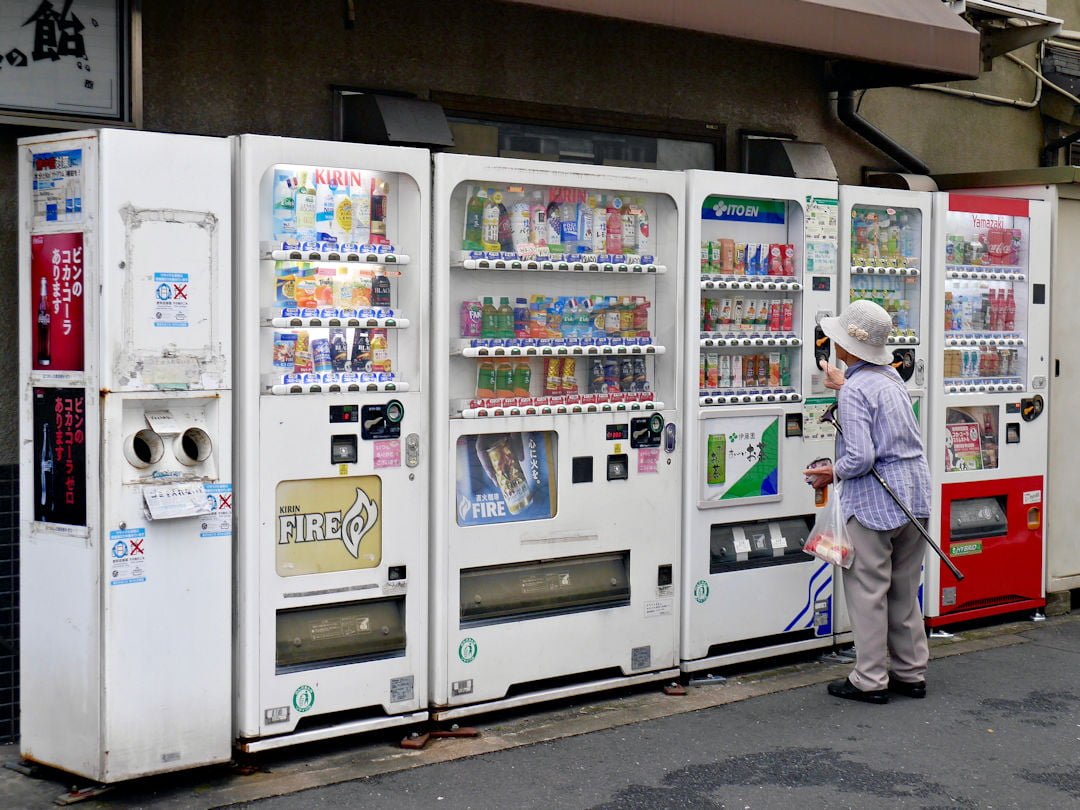
In Japan, there is one vending machine for every 31 people | Photo by Catrina Farrell on Unsplash
Coin lockers are almost everywhere too, making it easy to store your luggage for the day and explore. From train stations (even smaller ones) and major bus stations to important sights and attractions, there are always coin lockers (usually charging a few hundred yen, but in some cases, you even get your deposit back).
You can even forward your luggage if you prefer to travel just with a daypack (we’ll talk about it in more detail in our posts about the Kumano Kodo and Nakasendo hiking trails).

Thanks to coin lockers in stations and many attractions, you can explore Japan hands-free
Last but not least: Public toilets are never far away (with the exception of more remote hiking trails like the Kumano Kodo). Almost all public toilets have toilet paper, and are clean and well-maintained. Be aware though that not all public bathrooms have western-style toilets (or washlets) – sometimes you’ll need to squat over a hole in the ground.
Cash is King (and you’ll need to know where to get it)
With such a focus on convenience, you would think that you can pay with credit or debit cards everywhere. Unfortunately for foreigners, Japan is still (to a large degree) a cash society. Many ticket machines, including those for trains (and even the Shinkansen), do not accept foreign credit or debit cards. So, you’ll need to withdraw cash beforehand.
The only ATMs that accept foreign credit/debit cards without charging an ATM fee are located in 7-Eleven convenience stores as well as at airports and train stations – look for the red and white ATMs labelled Seven Bank. Good news: With the prevalence of 7-Eleven convenience stores, an ATM is never far away.
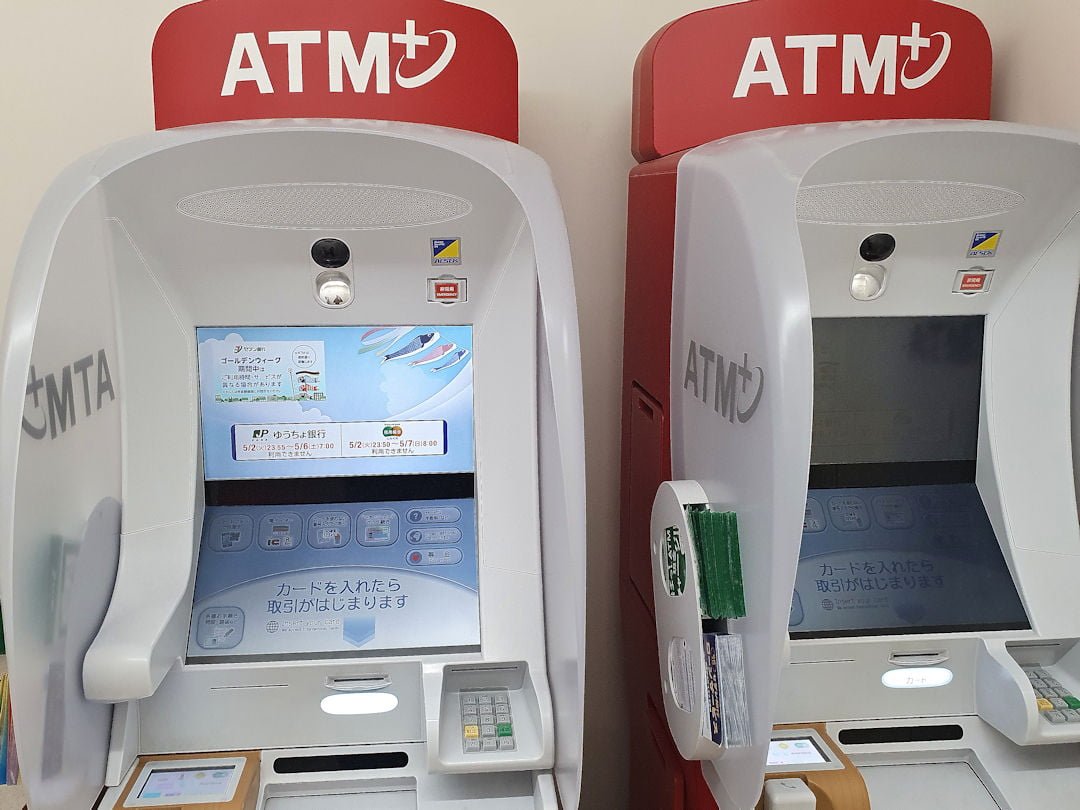
Seven Bank ATMs accept foreign credit/debit cards and don't charge an ATM fee
Your dining and groceries bill could be higher than you think
To stay on the subject of money…
Prices in supermarkets and convenience stores are advertised (in large/bold numbers) excluding the consumption tax of 10% (with the amount including the tax displayed in small numbers/brackets next to or underneath). Some restaurant menus also show prices excluding consumption tax.
It’s also worth noting: (many) pub-style restaurants (Izakaya) charge a cover charge of JPY300-400pp. On the upside: Tipping in restaurants is uncommon.
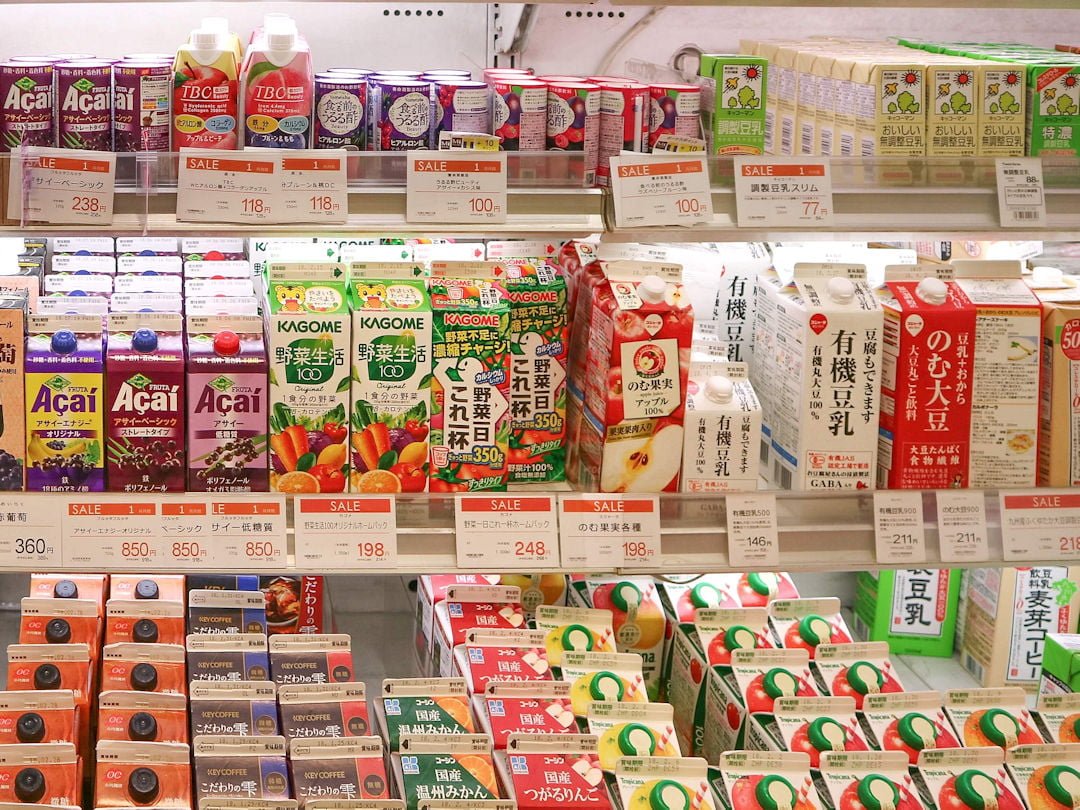
Prices advertised in Japan don't always include the 10% consumption tax | Photo by Joan Tran on Unsplash
Japan is not immune to drunken behaviour
And to stay on the topic of Izakayas…
We encountered Do not urinate here signs a few times in entertainment districts and learned that these signs are not (necessarily) for foreign visitors: 9/10 times we had dinner at an Izakaya, we shared the place with Japanese business people (old and young) playing drinking games. And it’s actually those business people who had a bit too much (sake) who Paul saw urinating in the streets on his morning runs.
By all means, let your hair down while on holiday in Japan, but please, do not pee in the streets.
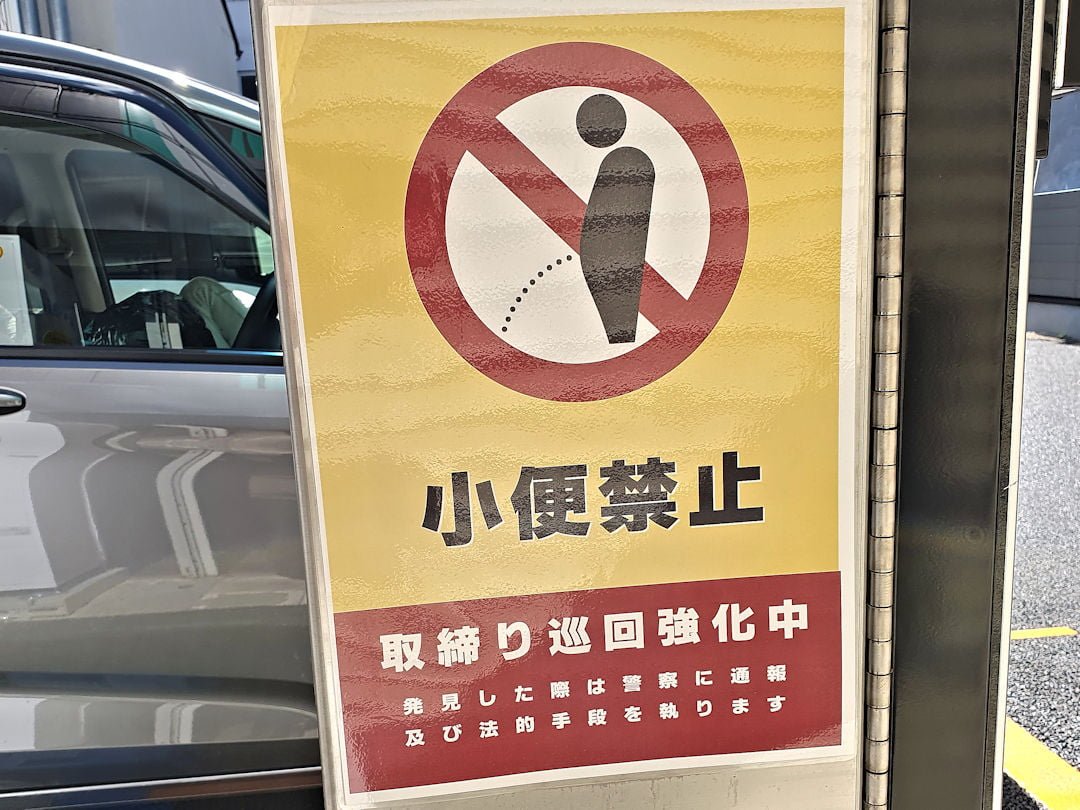
These "No Urinating Here" signs are not (necessarily) for foreign visitors
Public transportation is efficient (for the most part)
For a country prone to natural disasters and with so many mountains, Japan has a surprisingly large rail and road network. Speedy transportation from A to B is made possible by (some of the world’s longest) rail and road tunnels.
While the rail network is very fragmented – with many private rail operators besides the formerly state-owned JR (Japanese Railways) Group – train travel in Japan is easy and convenient. Trains (including subway trains in the cities) are (almost) always on time, with train drivers using by-the-second timetables.
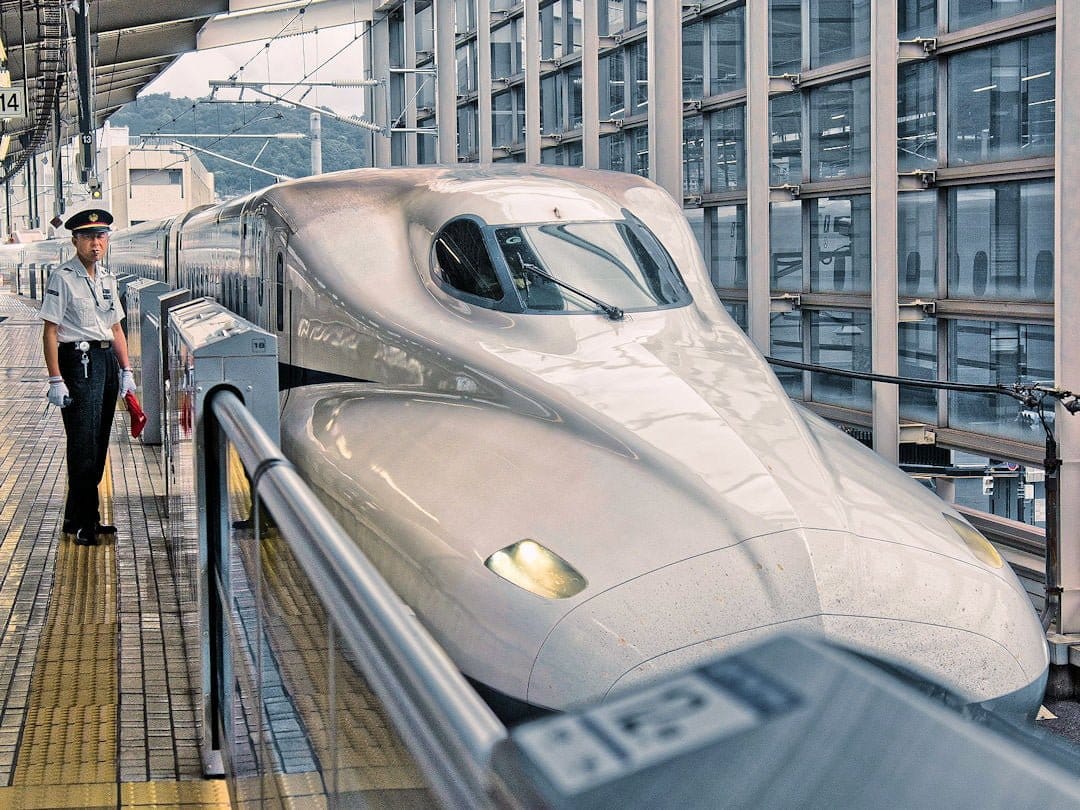
Trains in Japan are (almost) always on time, making train travel easy and convenient | Photo by Armin Forster on Pixabay
While the Japanese are masters in punctuality when it comes to rail transportation, intercity and commuter buses are less reliable – as they, like cars, can (and do) get stuck in traffic.
Bicycles are also a popular mode of transportation, even in big cities. Many train stations have bike racks (and even multi-storey bike parking facilities), enabling commuters to bike to and from the train, and leave the car at home for weekend use only. Mums and dads chauffeur their children around on bikes (with two child seats – one in the front and one in the back – not uncommon).
It’s also worth noting: there is no obligation to wear helmets on bicycles in Japan, which surprised us, having lived in countries where helmet laws are strictly enforced.

Riding a bicycle in Japan is common (wearing a helmet not) | Photo by Mario Effendy on Unsplash
Public napping is commonplace
To stay on the topic of public transport… Whenever you take a train (or even a bus), you’re guaranteed to find passengers snoozing.
We read somewhere that the average Japanese employee works well over 40 hours a week. Maybe they’re just too tired to stay awake on their commute.
Astonishingly, they always seem to know (inherently) when it’s their turn to get off. At least, we never encountered one opening their eyes and jumping up in shock, having missed their stop. Or maybe they do and just don’t want anyone to notice.

Public napping is commonplace in Japan, especially on public transport
(Petty) Crime is (almost) non-existent
The fact that people feel safe enough to fall asleep in public is a testament to just how safe Japan is.
We were hugely surprised to see Japanese leave their laptop and smartphone charging by the seat while they went to the bathroom on the train or their handbag on the chair in a café while they placed their order at the counter. We also saw shopkeepers leave (bulky/heavy) products outside their shops overnight, trusting that no one would steal them.
That trust also extends to visitors, including foreigners. We hired bicycles (including e-bikes) multiple times, and we never had to pay a deposit or show our IDs. They just trusted us to return the bikes (in the same condition we got them).
It takes some getting used to but is also incredibly refreshing to experience a country where you don’t have to be constantly on guard for pick-pockets and scams.
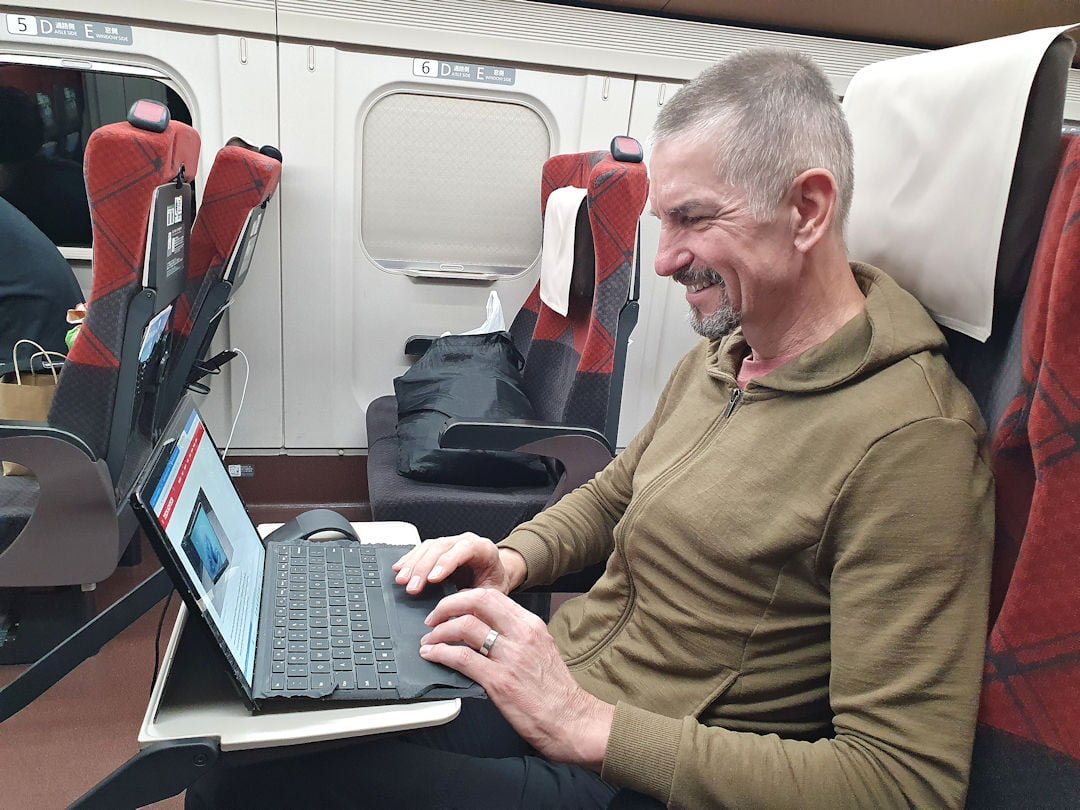
Japan's crime rate is so low that people (feel comfortable to) leave their belongings unattended
Loud sniffing and slurping are okay, finger-pointing not
Japanese people don’t blow their noses in public. Apparently, it’s considered bad manners. Instead, they sniff their noses – all the time – which can be pretty annoying if you happen to sit next to a sniffer on a multi-hour train ride or in a restaurant.
While Japanese are usually super-quiet (bar the sniffing), people slurp loudly when they eat soup. This may seem impolite where you’re from, but it’s not considered rude in Japan. Quite the opposite: slurping is a sign that you enjoy the soup.
Pointing your fingers on the other hand IS considered rude. So, if you want to point at something (or someone), use your open hand instead.

Please don't point a finger in Japan - it's considered rude | Photo by Nicholas Jeffries on Unsplash
Onsens are used naked (and tattoos are still largely taboo)
To stay on the topic of etiquette: Visiting a hot spring bath (called onsen) means you’ll need to strip into your birthday suit and, if it’s a public onsen, you’ll be sharing it with other people of your own gender (including complete strangers).
Undress in the changing room (and store everything – including your bath towel – in the basket or locker provided). Then head into the onsen room (naked) and take a shower (sitting down on the little stool provided). Once showered, step into the bathtub/pool and enjoy the healing powers of the hot spring water.

Before stepping into the onsen tub/pool, undress and shower (sitting down on the little stool provided)
The same process applies to private onsens too, by the way. The only difference is that you can share a private onsen with your (different-gendered) partner. Be mindful though – even in private onsens, the tub/pool water is shared with others (who use the onsen before/after you).
And to stay on the topic of onsen etiquette: If you have a tattoo, many public onsens are (still) off limits to you. Even covering them won’t be accepted. Tattoos in Japan are not (yet) considered works of art but are traditionally associated with organised crime, and the Yakuza are not welcome in an onsen. Do your research beforehand to avoid disappointment.
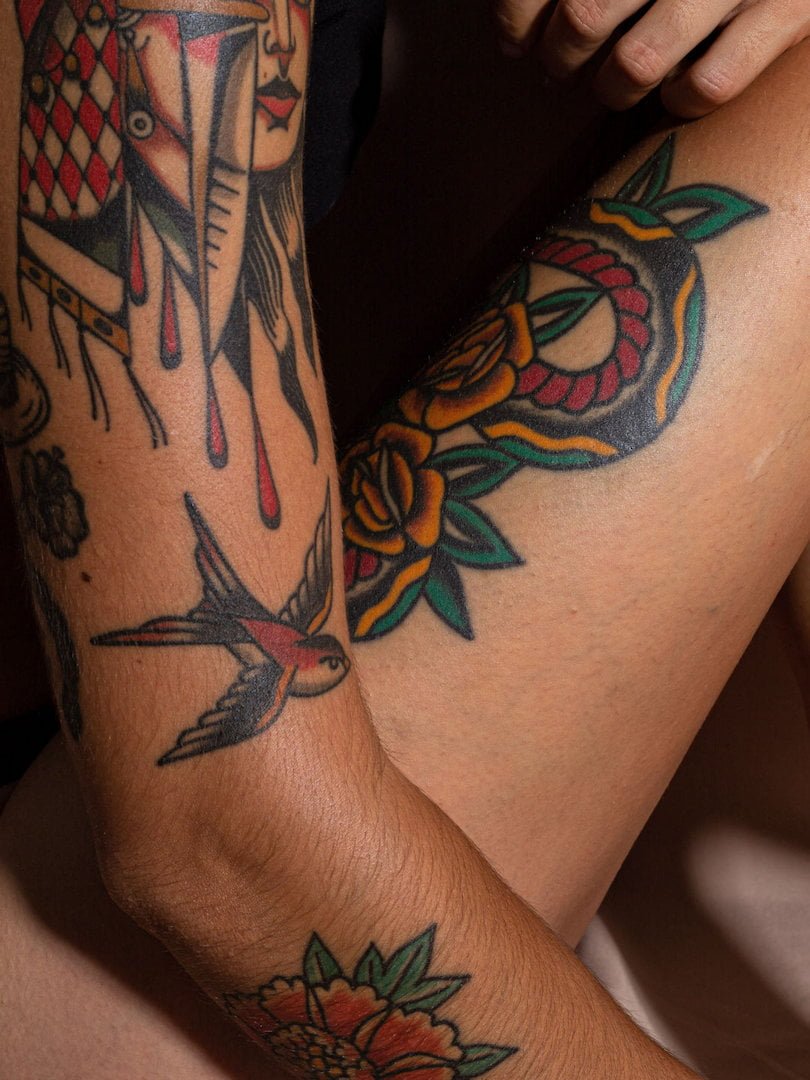
Tattoos are still (largely) taboo in (public) Onsens in Japan | Photo by Stories and Ink on Unsplash
Overtourism is a problem
Popular cities and attractions in Japan can get incredibly busy. And even lesser-known sights are packed with (busloads of) tourists for most of the day during busy periods of the year (like the cherry blossom and autumn foliage seasons, and during the many festivals held throughout the year).

The truth behind Instagram shots: For most of the day, Arashiyama's bamboo forest is (over)crowded with tourists | Photo by Walter Mario Stein on Unsplash
- Travel out of season
- Get up early and/or stay overnight to experience a place before the day visitors arrive/after they have left
- Explore off-the-beaten path places and experiences.
For other sustainable travel tips check out our comprehensive post on the topic.
Mother Nature is not always treated well (unfortunately)
Both Buddhism and Shintoism, the two main religions in Japan, promote compassion and respect for all living beings. Yet, disconcertingly, animal exploitation is still a very real thing in Japan.
Whether it’s
- monkeys being forced to perform in front of tourists at Lake Biwa and Lake Kawaguchi,
- dolphin and orca shows on Okinawa,
- monkey feeding at Arashiyama Monkey Park, bear feeding at Okuhida Bear Park and deer feeding in Nara Park,
- or Owl Hotels and Hedge Hog Cafes in cities like Tokyo,
these kinds of attractions/activities need to stop.
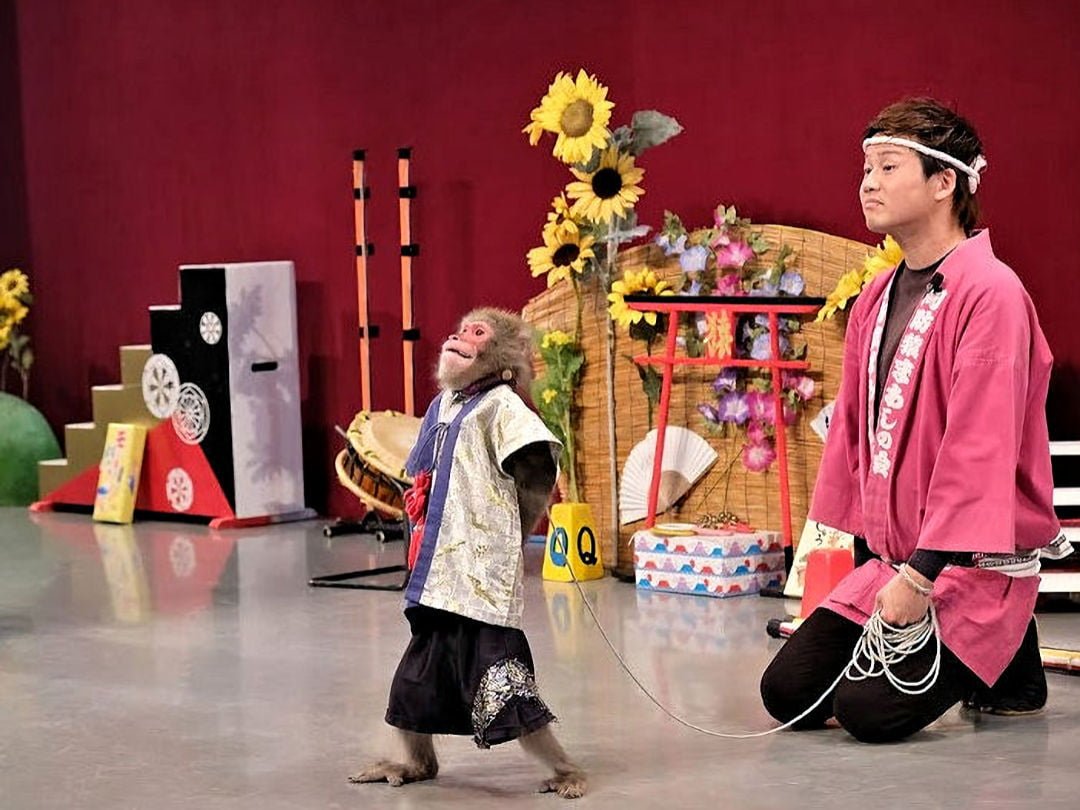
Don't visit attractions or partake in activities that exploit animals | Photo by Raymond Cheung
So, please, do not encourage the continued exploitation of animals by visiting such attractions or partaking in such activities.
Instead, explore the hiking trails of the Nakasendo or the Japanese Alps where you may encounter Japanese macaques in their natural habitat (not only at the Jigokudani Snow Monkey Park).
Or head to the Kerama Islands off Okinawa where you can watch dolphins and whales play in the ocean waves.
Earthquakes are frequent in Japan (but you may not actually experience one during your visit)
And to finish off with Mother Nature…
Japan sits on the Ring of Fire, an area of significant seismic activity surrounding the Pacific Ocean – just like Paul’s native New Zealand. Unsurprisingly, there are a lot of earthquakes. But most of them are not strong enough to be felt by us mere mortals. We only experienced one minor earthquake in the three months we spent in the country in 2023 (and none during previous visits).

Earthquakes are frequent in Japan (but you may not actually experience one during your visit)
We’re not saying that you won’t experience a stronger one (there was a bigger earthquake in Ishikawa Prefecture two weeks after we visited), but the likelihood of you encountering one during your visit is lower than you may think.
As a foreigner, what surprised you most about Japan?
I wrote these learnings based on our own personal experience. If you’ve visited to Japan, what surprised you most about the country? I would appreciate it if you could share this article with your friends and family via the Share buttons below. Even better, link to the page from your personal blog or social media platforms.

